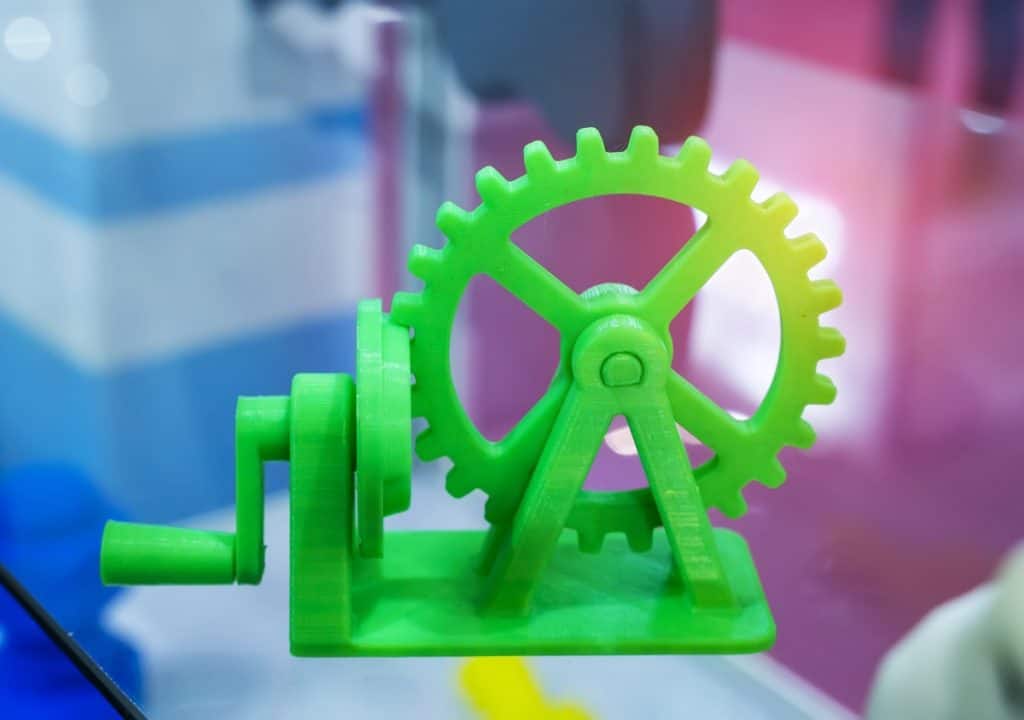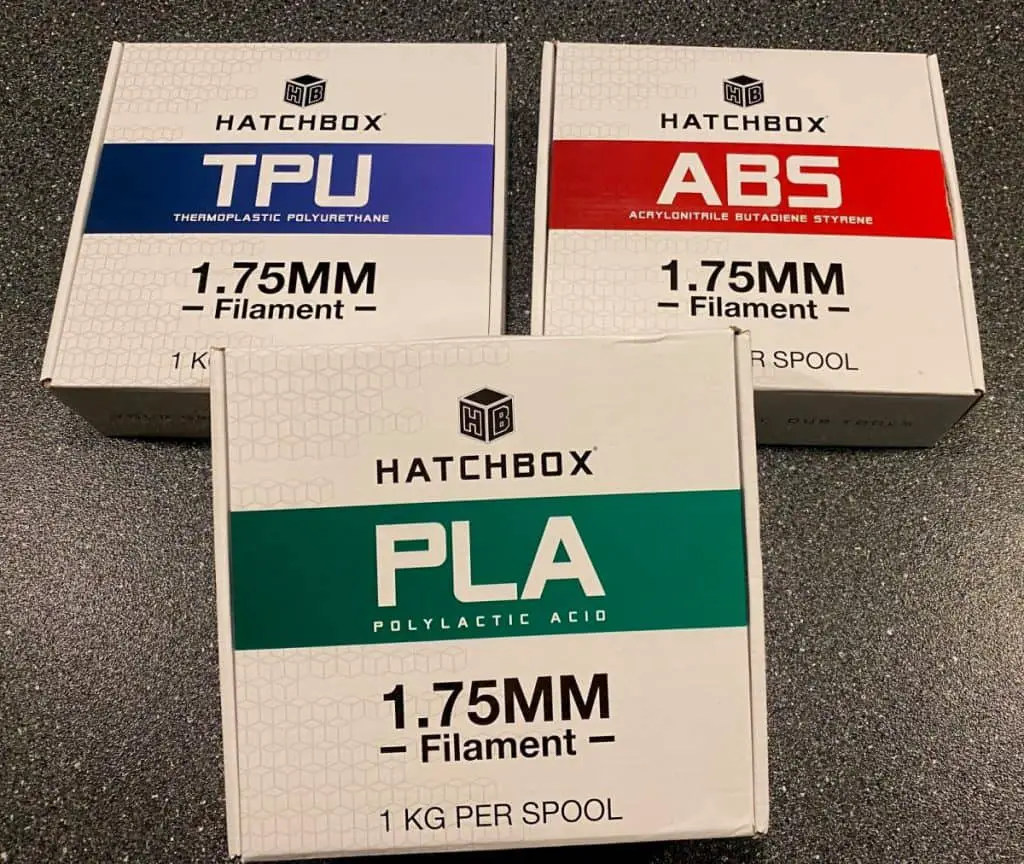I’ve been tinkering with 3D printers for quite a while and a question I had back when I was a beginner was what can a 3d printer print? Based on my extensive experience and research here’s what I found.
A 3D printer can print virtually anything. Hobbyist 3D printers will typically only print plastic, however, industrial 3D printers can print metal. Metal 3D printers can create metal objects with extreme precision. For example, they can make engine parts and circuit boards.
3D printers can also only print 3d objects that are as big as the 3D printer is. So, if you want to print something really large, you need to buy a much larger 3D printer. However, with that comes a much bigger price tag. A regular 3D printer that you’d use at home can print objects that are around 1 ft by 1 ft (30 cm x 30 cm) comfortably.
In this article, I will explain what can be printed with a 3d printer, what materials can not be 3D printed with a 3D printer, whether you can print a phone, as well as, other helpful info about what the limits are to objects you can 3D print.

What can be printed with a 3D printer?
Some objects are very detailed and to create the design by hand using computer software would take a long time. But, how difficult is it to print anything on a 3d printer, and what exactly can be printed with a 3d printer?
You can virtually 3D print anything. The main limitation is how long it takes to create the 3D print design in a 3D printing software, how long it will take to print, and the size of the 3D printer you need.
However, there is now interesting technology that can create a 3D design based on photos of an object. And it takes dramatically less time.
Here’s a video showing the process of taking the photos, and creating the 3D print design:
But, waiting for the software to convert your images into a final 3D design can take many hours or days depending on how detailed it is.
Once it’s done though, you can export the file to your 3D printer for printing. Typically there’s some tidying work that needs to be done on it.
Although this method takes a lot less time than creating the design by hand, you do still need to take quite a lot of photos. Around 100 to 200 photos from lots of different angles will give you the best result.
Here’s a quick overview of the entire process of converting ANY object into a 3D print:
- Take 100 to 200 photos from lots of different angles
- Upload photos to software like Autodesk Remake (free version available)
- Use the software to convert the photos into a 3D print (does it in 1 click)
- Send the 3D print file to your 3D printer
- Print the file
Certain objects though are best printed in parts. As a simplified example, if you wanted to print a plastic skateboard, you would print the wheels separately from the axel. That way the wheel can spin.
When people talk about 3D printing they normally mean 3D printing at home as a hobby. However, steel manufacturing facilities will use 3D printers to print metal parts. For example, they can print parts used in a car engine, circuit boards for computers, and electronic parts for devices like toasters and kettles.
What materials cannot be 3D printed and why?
As you may know, you can print plastic, and metal, however, what materials can you not print on a 3d printer?
Virtually all man-made materials can be 3D printed. However, some materials are extremely difficult and impractical to 3D print. Glass, for example, is not practical to 3D print because it has an extremely high melting point. Certain metals also have an extremely high boiling temperature and are thus impractical to 3D print.
A 3D printer is essentially a mechanical arm that is attached to a computer that can give it step-by-step instructions. Therefore, as long as a material is runny enough it can be printed using a 3D printer For example, there are also 3D printers that are designed to 3D print concrete.
Other materials won’t hold up when 3d printed because they are too soft or won’t go hard. Therefore, the sky is technically the limit when it comes to what material you can use in a 3D printer. However, a hobbyist type of 3D printer is typically only designed to work with plastics that have a specific formula. Which are commonly called 3D printer filaments.

Can a 3D printer print a phone?
A smartphone is an amazing device, and it has the power of a computer in a very compact size. I’ve often wondered how you would make a phone using a 3D printer and whether it can be done. Here’s what I found…
As a general rule, you can not 3D print a phone. However, you can 3D print a lot of the components for a phone. For example, you can 3D print the plastic exterior. 3D printers that can print metal are expensive and after you’ve printed the individual parts you still need to solder the parts together.
You can easily make an object that looks like a phone using a 3D printer. However, you couldn’t use it to make calls or send text messages.
3D printers that print metal are very expensive, and they cost around $50,000. After that, it needs to be set up, and you need to do special training, which requires the help of professionals that can be quite costly. And it isn’t really suited to a hobbyist 3D printer.
What are the limits of 3D printing?
With 3D printing objects as a whole, I wanted to know whether there are any limitations to what you can create, and if so what are they?
The limits to 3D printing are:
- It takes more time to create bigger objects
- More intricate objects take more time to print
- You cannot print certain materials such as glass
- Size – to make a big object you need a big 3D printer
A 3D printer creates an object a very small amount at a time. So, a big object can often take a week to print. Also, with intricate objects, the nozzle has to make more back and forth movements. And as a result, it takes much more time to print an intricate object.
Other materials are impractical to print. Glass, for example, requires temperatures of around 1300 °F (700 °C) to begin to melt. Recent work by scientists to 3D print glass has been successful, but it is extremely difficult to create precise objects. And most designs are lop-sided and don’t look like the design at all (source: link).
Well, that about covers everything you need to know about whether you can 3D print anything.
Related Articles
- How to Print a File from Thingiverse (The Easy Way!)
- Create a Temperature Tower Using Cura – The Easy Way
- Cura Profiles
- Do 3D Printers Use a Lot of Power? (The Numbers Inside)
- Can You 3D Print Food?
Make sure you check out our YouTube channel, and if you would like any additional details or have any questions, please leave a comment below or join us on Discord. If you liked this article and want to read others click here.
